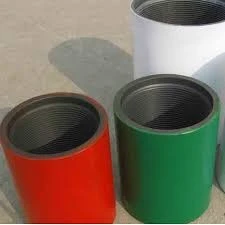- Afrikaans
- Albanian
- Amharic
- Arabic
- Armenian
- Azerbaijani
- Basque
- Belarusian
- Bengali
- Bosnian
- Bulgarian
- Catalan
- Cebuano
- Corsican
- Croatian
- Czech
- Danish
- Dutch
- English
- Esperanto
- Estonian
- Finnish
- French
- Frisian
- Galician
- Georgian
- German
- Greek
- Gujarati
- Haitian Creole
- hausa
- hawaiian
- Hebrew
- Hindi
- Miao
- Hungarian
- Icelandic
- igbo
- Indonesian
- irish
- Italian
- Japanese
- Javanese
- Kannada
- kazakh
- Khmer
- Rwandese
- Korean
- Kurdish
- Kyrgyz
- Lao
- Latin
- Latvian
- Lithuanian
- Luxembourgish
- Macedonian
- Malgashi
- Malay
- Malayalam
- Maltese
- Maori
- Marathi
- Mongolian
- Myanmar
- Nepali
- Norwegian
- Norwegian
- Occitan
- Pashto
- Persian
- Polish
- Portuguese
- Punjabi
- Romanian
- Russian
- Samoan
- Scottish Gaelic
- Serbian
- Sesotho
- Shona
- Sindhi
- Sinhala
- Slovak
- Slovenian
- Somali
- Spanish
- Sundanese
- Swahili
- Swedish
- Tagalog
- Tajik
- Tamil
- Tatar
- Telugu
- Thai
- Turkish
- Turkmen
- Ukrainian
- Urdu
- Uighur
- Uzbek
- Vietnamese
- Welsh
- Bantu
- Yiddish
- Yoruba
- Zulu
stainless steel threaded coupling
Understanding Stainless Steel Threaded Couplings
Stainless steel threaded couplings are essential components in various industries, particularly in plumbing, construction, and manufacturing. These fittings facilitate the joining of two pipes or tubes, ensuring a secure and leak-proof connection. The unique characteristics of stainless steel make it an ideal material for these couplings, providing durability, corrosion resistance, and structural integrity.
What is a Threaded Coupling?
A threaded coupling is a type of connector that features internal threads, which allow it to join two male-threaded pipes or fittings. The design ensures a strong mechanical bond that can effectively withstand pressures and stresses common in piping systems. Couplings come in various sizes, shapes, and thread types, each suited for specific applications.
Advantages of Stainless Steel
1. Corrosion Resistance One of the most significant advantages of stainless steel is its resistance to rust and corrosion. This property makes stainless steel threaded couplings ideal for use in environments where exposure to moisture, chemicals, and extreme temperatures is common. They are widely used in marine applications, food processing, and chemical manufacturing, where maintaining cleanliness and integrity is crucial.
2. Strength and Durability Stainless steel is known for its exceptional strength-to-weight ratio. Threaded couplings made from this material can handle high pressure and mechanical loads without deforming or breaking. This durability ensures a long service life, reducing the need for frequent replacements, which can save time and costs in maintenance.
3. Hygienic Properties The smooth surface of stainless steel is not only aesthetically pleasing but also contributes to its hygienic properties. It is easy to clean, which is particularly important in industries like food and beverage production, where contamination risks must be minimized.
stainless steel threaded coupling

4. Wide Temperature Range Stainless steel threaded couplings can operate efficiently across a wide range of temperatures, making them suitable for both hot and cold applications. This versatility expands their use in various industrial settings, from HVAC systems to oil and gas pipelines.
Applications of Stainless Steel Threaded Couplings
Due to their numerous advantages, stainless steel threaded couplings are found in a wide array of applications. In plumbing, they are used to connect pipes carrying water, gas, or sewage. In construction, these fittings secure structural elements, ensuring stability and safety in buildings and infrastructure.
In the oil and gas industry, stainless steel couplings are vital for transporting petroleum products through pipelines. Their resistance to corrosive environments ensures that there are minimal risks of leaks or failures, which could have catastrophic consequences.
The pharmaceutical and chemical industries also rely heavily on threaded couplings. These industries demand high-quality materials that can withstand harsh environments without compromising the products they transport.
Conclusion
Stainless steel threaded couplings are indispensable in modern engineering and construction. Their unique properties, including corrosion resistance, strength, and hygienic surfaces, make them particularly valuable in several industries. As technology and manufacturing processes continue to evolve, the demand for reliable and durable fittings like stainless steel threaded couplings will only increase. Understanding their benefits and applications can help businesses make informed decisions when selecting materials for their projects, ultimately enhancing performance and safety in their operations. Whether for high-pressure pipelines or simple plumbing systems, stainless steel threaded couplings offer a reliable solution that stands the test of time.
-
Tubing Pup Joints: Essential Components for Oil and Gas OperationsNewsJul.10,2025
-
Pup Joints: Essential Components for Reliable Drilling OperationsNewsJul.10,2025
-
Pipe Couplings: Connecting Your World EfficientlyNewsJul.10,2025
-
Mastering Oilfield Operations with Quality Tubing and CasingNewsJul.10,2025
-
High-Quality Casing Couplings for Every NeedNewsJul.10,2025
-
Boost Your Drilling Efficiency with Premium Crossover Tools & Seating NipplesNewsJul.10,2025







